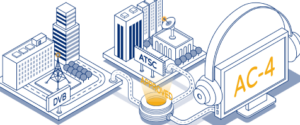The National Association of Broadcasters (NAB) has applauded rule changes by the Federal Communications Commission’s (FCC) to help pave the way for the next generation of over-the-air television, commonly known as NextGen TV or ATSC 3.0. Here are the main points simplified:
Among the key takeaways from the recent FCC update:
- Simulcasting and Multicasting: Since not all viewers will immediately switch to ATSC 3.0 compatible devices, the FCC is requiring broadcasters to continue broadcasting their primary content in the old 1.0 format, a process known as “simulcasting”. Multicasting refers to broadcasting multiple channels or streams from one station. The FCC has expanded the TV station license framework to include these multicast streams during the transition period.
- Primary and Multicast Simulcast Arrangements: Given that a station can’t broadcast a 1.0 and 3.0 signal from the same facility, the FCC allows stations broadcasting in 3.0 to contract with another station to deliver its 1.0 simulcast. This was initially under a special temporary authority, but it is now expanded to include multicast signals.
- Limit on Hosted Channels: While stations can strike deals with other stations to host their primary 1.0 simulcasts, there is a limit to the number of channels one station can host. The number is capped at the number of channels the originating station could have hosted using its own spectrum.
- Ownership/Attribution and Noncommercial Status: The FCC clarified that hosting simulcasts for another station will not affect the hosting station’s ownership or noncommercial status.
- Sunset Date for Simulcasts: The FCC initially required the primary ATSC 3.0 signal and 1.0 simulcasts to be similar until July 17, 2033. However, they’ve now revised this sunset date to July 17, 2027.

